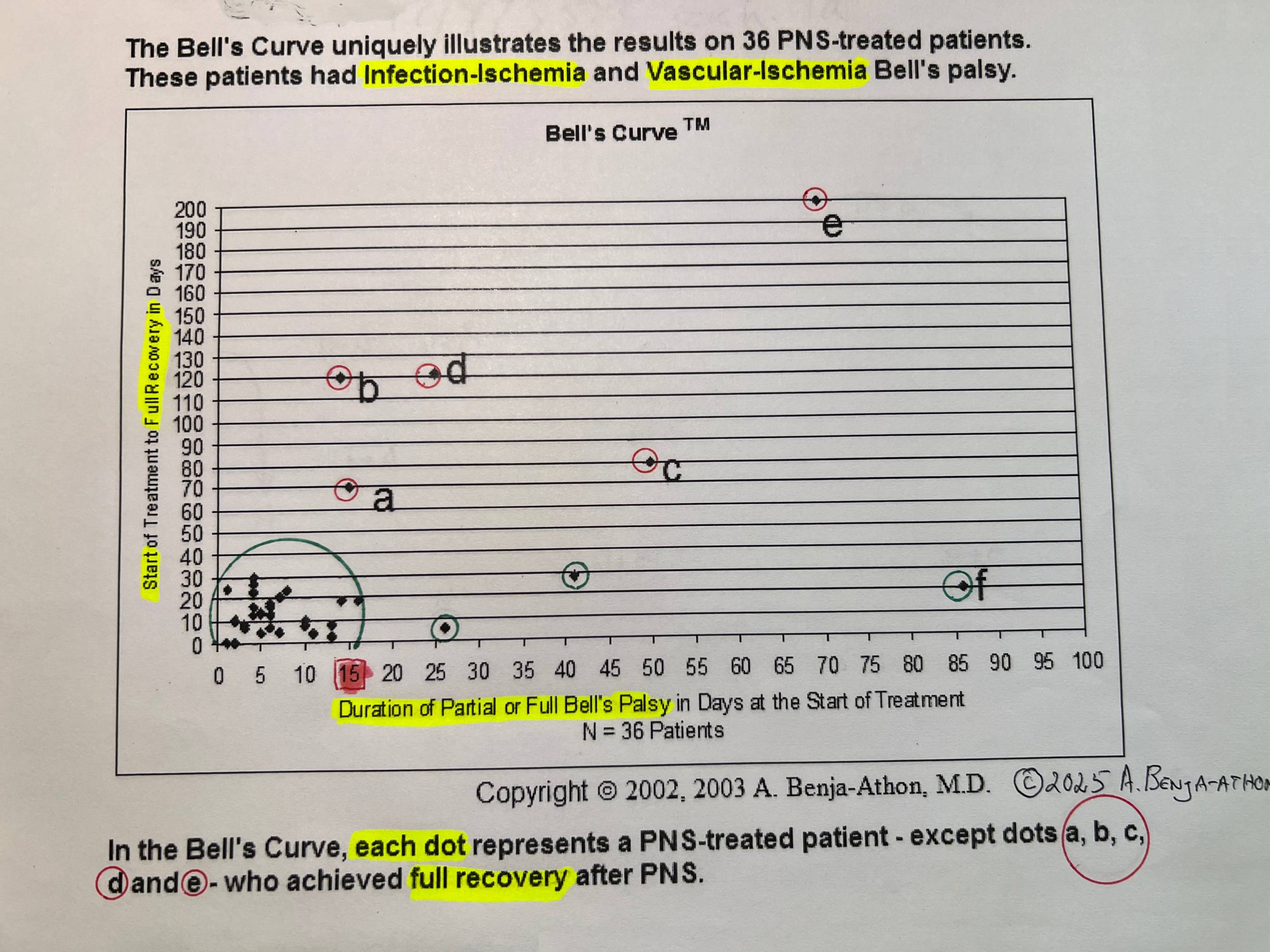Bell's Palsy Medicine
US Patent Pending 17/973,513

- The most scientific data on Bell's palsy (BP)
- The Bell's Curve
- The unique treatment and cure for BP
- discovered by Anuthep Benja-Athon, M.D.,P.C., New York
- [email protected]
- The Percutaneous Nerve Stimulation
- The data derived from 1,200 treatment sessions
- Those treated early achieved full recovery
- 2001 Bell's Palsy book is at Amazon.com
- Among 230 patients treated so far with
- BP is most commonly misunderstood by people
- including almost all physicians
- BP life-long facial disfigurement are common and
- The facial disfigurement at social media
- related sequelae are common
- Ineffective treatments
- Steroids
- anti-viral drugs
- physical therapy
- The above data uniquely contrasting
- Sullivan et al's conclusion
- N Eng J Med 357: 1598-6, Oct 18,07

In the history of mankind, since Sir Charles Bell 1829, there exists no publications elucidating the comprehensiveness, accuracy and cure of Bell's Palsy. The Bell's Curve™ uniquely epitomized the neurophysiology of Bell's paly including Ramsay Hunt syndrome heretofore unknown.
Neurapraxia (N) of the compressed facial nerve > time-specific application of 17/973,513 > the Bell's Curve™ green-circled time-dependent full recovery = cure of the decompressed facial nerve. Q.E.D.
The Bell's Curve™ , the green-circled patients' have had the compressed facial nerve in neurapraxia (N) achieved full recoveries/cure with 17/973,513 being administered within or around 15 days (red colored square).
In the Bell's Curve™, the y-axis = f(facial nerve responses to 17/973,513, x-axis factors) and x-axis = f(patients' time it took to 17/973,513, facial canal anatomy and pathophysiology), demonstrating the time-dependent and time-specific pathognomic signs and symptoms of Bell's Palsy; and
the red colored square comprises the timeline 15 days or 2 weeks at which neurapraxia progresses to axonotmesis and, subsequently, neurotmesis which is not present in the 36 patients in the Bell's Curve™.
According to Sunderland S. J Neurol Neurosurg Psychia (39) 615 1976:
Neurapraxia (N) is a segmental block of axonal conduction.... The nerve is in continuity but it does not function;
Axonotmesis (A) is the loss of continuity of nerve axon but with continuity of the connective tissue sheath. ...wallerian degeneration.... less chance of regrowth...due to loss of the continuity of the supporting elements; and
Neurotmesis ...axon destroyed....connective tissue is damaged.... the nerve may not grow much...and may ball up into a neuroma (life-long facial deformity and sequalae such as, but not limited to, synkinesis and tics)
